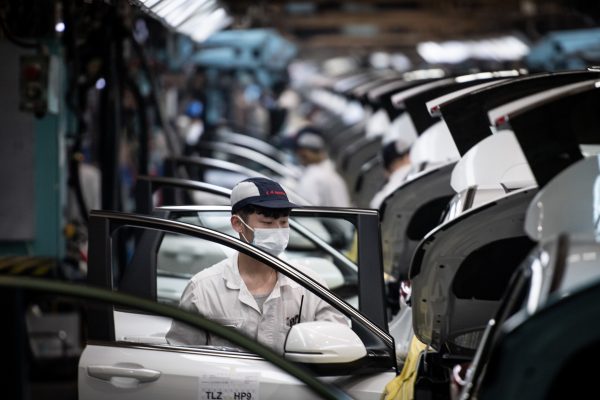The initiative prompts some critical questions. What, for example, is the degree of shared ambition? India and Japan have clear economic motivations — including fostering Indian pharmaceutical activity in Japan and Australia, and Japanese motor vehicle production in India. But distinctive strategic concerns also arise from recent border tensions with China in East Ladakh and the Senkaku Islands.
The driving ambition of the United States is no less than to constrain China’s rising technological and strategic prowess. But although Australia may wish to have fewer eggs in the China basket, it will not want to jeopardise crucial trade links with the region’s largest market. And ASEAN members, whose participation is unlikely, are reluctant decouplers as emerging beneficiaries of Chinese offshoring.
Another question is one of principle. Is it possible to designate and foster prospective areas of economic activity — such as semiconductors, aerospace, medical devices, textiles, chemicals and rare earths — without falling into the trap of picking winners? This danger is very real for Japan, having budgeted US$2.2 billion to reconfigure supply chains. The risk is also particularly acute in the framework of the global value chains (GVCs). The temptation will be to reduce import restrictions on intermediate inputs while increasing them on final products, raising the spread of tariffs (tariff dispersion) and hence trade distortion.
A related question is one of practical feasibility. How realistic is it to seek to displace China in GVCs? Some firms, like Toshiba and Komatsu, have shifted production elsewhere in response to US penalty tariffs against China. But this has been at great cost and in defiance of the advantages that China offers with its vast domestic market and workforce, deep supplier networks and reliable infrastructure.
India and the United States might, by virtue of their size, be considered possible alternatives to China within certain supply chains — yet both have policy settings that mitigate against this. India consistently fails to capitalise on its comparative advantage in manufacturing, and the United States imposes self-harming restrictions on the spread of its technology.
The challenges to reconfiguring supply chains are compounded by the fact that they tend to be sticky, given the high fixed costs involved in establishing them. Foxconn, for instance, had to spend US$8.8 billion to build a single plant. Moreover, although the disruption caused by COVID-19 is a principal driver of the pursuit of supply chain restructuring, the hit to firms’ cash flows in the wake of the pandemic makes it harder to meet the costs of reconfiguration.
So while some adjustments will be made to supply chain structures — such as for choke points in medical supplies — a major shift in global trade patterns is a fantasy.
This is not to say that there is no role for the SCRI. But the focus will need to be less on sectoral reconfiguration and picking winners, and more on cooperative efforts to improve overall supply chain functioning. This calls for better harnessing of technology in supply chain management, freer cross-border data flows and greater regulatory coherence in digital trade protocols.
The SCRI may also have a role in energising international bodies. Two examples stand out — instigating efforts by G20 trade ministers to avoid vaccine nationalism and disruption to COVID-19 vaccine supply chains, and promoting action in the World Trade Organization to secure greater Chinese respect for intellectual property rights. Such collective action should be welcomed by Canberra, which does not need another David and Goliath moment.
Still, the overriding requirement in improving global supply chain resilience and effectiveness is better domestic economic policies within the countries engaged in them. These are policies that strengthen both backward and forward linkages.
For prospective SCRI participants, such policies will be country-specific. India must develop simpler labour laws, improve basic infrastructure and promote openness in the digital economy. Japan should foster improvements in productivity via enhanced corporate governance to offset the impact of falling labour inputs. The United States would do well to return to more open policies of technological development, enabling it to ‘run faster’. And Australia, in line with its Department of Foreign Affairs and Trade’s COVID-19 parliamentary inquiry submission, should avoid ‘rigid production systems based on the worst and most infrequent of events’.
In brief, if the SCRI is not to be a slippery slope it will need to focus less on decoupling from China and more on domestic and cooperative action to improve the enabling environment in which supply chains operate.
Ken Heydon is a visiting fellow at the London School of Economics. He is formerly an Australian trade official, deputy director-general of Australia’s Office of National Assessments and senior member of the OECD secretariat. His latest book is The Political Economy of International Trade: Putting Commerce in Context (Polity, 2019).

